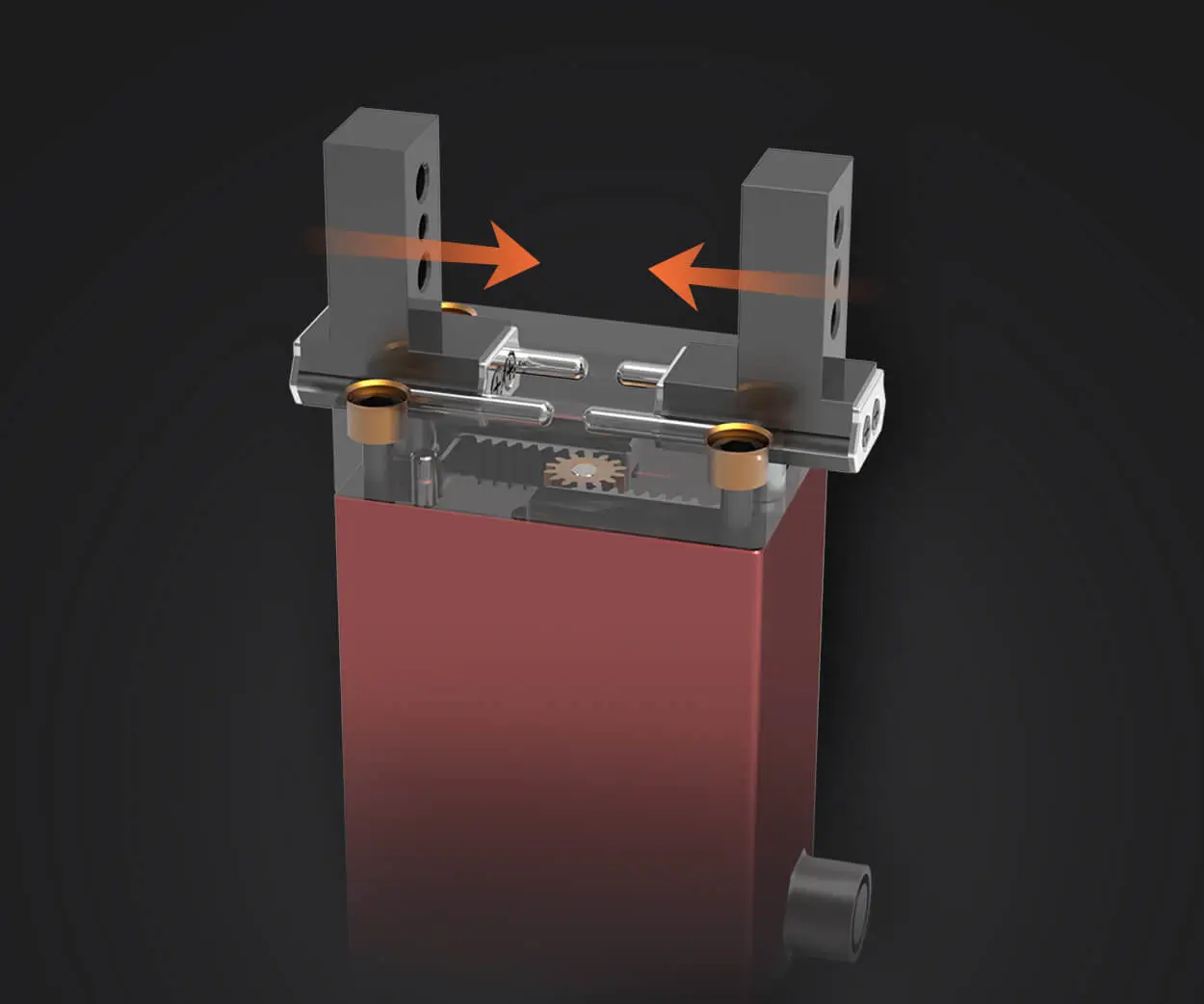Unveiling the Microstepping Marvel: A New Era of Precision in Motion Control
In the world of automation, robotics, and sophisticated machinery, the quest for perfect motion is ongoing. It’s a pursuit of precision, smoothness, and efficiency that often feels just out of reach—until now. Enter the microstepping stepper motor, a technological marvel that has transformed the landscape of precise movement control.

At its core, a stepper motor is a device designed to convert electrical pulses into precise rotational movement. Unlike traditional motors, which spin continuously, stepper motors move in discrete steps—each pulse causes a certain amount of rotation. This inherent precision makes them ideal for applications requiring exact positioning, such as printers, CNC machines, robotic arms, and even advanced medical devices.
The basics of stepper motors: stepping into accuracy
A standard stepper motor typically has several 'step angles,' which define how much it rotates with each pulse. For example, a common stepper motor might have a step angle of 1.8°, meaning it takes 200 steps to complete a full 360° rotation. While precise enough for many uses, some applications demand even finer control—this is where microstepping enters.
Decoding microstepping: finer than a single step
Microstepping is a technique used to divide each full step into smaller, more manageable parts. Instead of rotating in 1.8° increments, the motor can move in smaller fractions—like 0.9°, 0.45°, or even less—by controlling the current in the motor windings with high resolution.
But how does it do this? It’s all about the motor’s internal electromagnets and the clever control provided by a specialized driver. By precisely modulating the current flow in the motor’s coils, the driver can position the rotor at intermediate points between the full steps. Think of it as a bicycle wheel: instead of only being able to stop at the spokes, microstepping lets the wheel stop at between spokes, providing a smoother ride overall.
The underpinnings: how microstepping works inside
Inside a stepper motor, magnets and coils are arranged so that when electricity flows through the coils, it creates a magnetic field that pulls the rotor into alignment with that field. In simple stepping, the driver energizes one set of coils at a time, nudging the rotor to the next full step.
In microstepping, the driver applies varying currents to both coils simultaneously, creating a magnetic vector that is between the two full-step positions. By gradually shifting the magnetic vector, the rotor position becomes a fractional step, giving the motor the ability to move in tiny, smooth increments.
Advantages of microstepping: more than just finer steps
The appeal of microstepping lies in its many benefits:
Enhanced resolution: Microstepping allows for movements with much finer resolution than standard full stepping, enabling applications requiring high precision.
Smoother motion: Instead of jerky or choppy movements, microstepping produces smoother operation, ideal for delicate tasks like 3D printing or optical inspections.
Reduced vibrations: With smoother steps, vibration and resonance issues decrease, which is vital for precision manufacturing and imaging.
Lower acoustic noise: Microstepping reduces the noise produced during operation—especially relevant in environments like laboratories or medical settings.
Improved positional accuracy: With microstepping, the position feedback improves, making closed-loop control more effective.
Limitations to keep in mind
While microstepping seems like the perfect enhancement, it isn’t without limitations:
Torque reduction: Increasing microstepping divisions often results in lower torque at each microstep, which may require higher current or more powerful drivers.
Position accuracy depends on load and other factors: Microstepping doesn’t guarantee perfect position holding, especially under heavy loads or with resonance issues.
Resonance and accuracy constraints: Stepper motors can exhibit resonance at certain speeds, which microstepping alone cannot entirely eliminate, although it does diminish these effects.
The evolution of drivers: enabling microstepping
Key to microstepping's success are stepper motor drivers—these are sophisticated electronic circuits that control how current is supplied to the motor windings. Modern drivers support multiple microstepping modes, such as 1/2, 1/4, 1/8, 1/16, or even 1/256 microsteps. These drivers use pulse-width modulation (PWM) and sophisticated algorithms to finely control the currents, creating the smooth, precise movements.
It’s worth noting that the quality of the driver and its microstepping implementation significantly impacts the actual performance and accuracy achievable. High-end drivers provide better microstep accuracy, lower noise, and greater reliability, making them essential for critical applications.
Applications flourishing with microstepping
Microstepping has become a staple in industries demanding high precision:
3D Printing: Enhances print quality by ensuring smoother extruder and bed movements, especially important for intricate designs.
CNC Machining: Allows for more detailed cuts and refined machining processes.
Robotics: Enables robots to achieve delicate and precise movements for assembly, surgery, or research.
Optical Equipment: Provides smooth motion for microscopes and telescopes, minimizing vibrations.
Medical Devices: Ensures safe, precise movement in life-saving equipment.
Looking around the corner: the future of microstepping
Embracing advances in electronics, microstepping continues to evolve. Innovations include hybrid stepping and more intelligent control algorithms that mitigate resonance issues and further improve accuracy. Moreover, the integration of sensor feedback (closed-loop systems) combined with microstepping promises a future of even more reliable and precise control.
In the next section, we’ll explore real-world examples, how to select the right microstepping motor for your project, and tips for optimizing performance. For anyone venturing into the realm of precise motion, understanding microstepping is an essential step toward mastering the art of movement.
Leveraging innovations in modular drive technology, Kpower integrates high-performance motors, precision reducers, and multi-protocol control systems to provide efficient and customized smart drive system solutions.




































